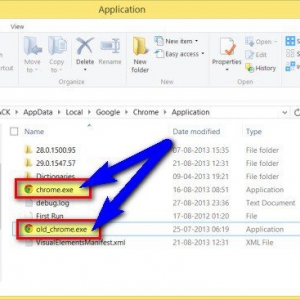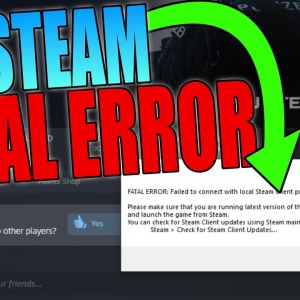In the dynamic landscape of network administration, the phrase "Configuration information could not be read from the domain controller" sends shivers down the spine of IT professionals. This seemingly innocuous error can have far-reaching consequences if not addressed promptly. Let's unravel the intricacies of this challenge and equip ourselves with the knowledge to tackle it head-on.

Understanding the Domain Controller
What is a Domain Controller?
Before we dive into the heart of the matter, let's grasp the concept of a domain controller. In the realm of network management, a domain controller is a server that authenticates users, stores security policies, and maintains the integrity of the entire system's configuration.
Significance of Configuration Information
Configuration information, stored on the domain controller, acts as the blueprint for the network. It includes settings, preferences, and access controls that dictate how the system operates. When this information cannot be read, it's akin to losing the map in an unknown territory.

Common Causes of Configuration Reading Issues
Network Connectivity Problems
One of the primary culprits behind the inability to read configuration information is network connectivity issues. When the communication between the system and the domain controller falters, configuration data becomes inaccessible.
Authentication Failures
Authentication is the gateway to configuration information. If user credentials cannot be verified, the system faces a roadblock in retrieving vital configuration details from the domain controller.
DNS Issues
The Domain Name System (DNS) plays a pivotal role in translating human-readable domain names into IP addresses. Any discrepancies or failures in the DNS can lead to the failure of the configuration data retrieval process.
Troubleshooting Steps
Checking Network Connectivity
Begin the troubleshooting journey by ensuring that the network is robust and free from disruptions. Conduct thorough tests to identify any issues affecting communication with the domain controller.
Verifying Domain Controller Accessibility
Confirm that the domain controller is accessible and responsive. This involves examining server logs, checking for hardware failures, and ensuring that the server is operational.
Reviewing Authentication Settings
Authentication settings are the gatekeepers of configuration information. Evaluate and adjust these settings to guarantee seamless communication between the system and the domain controller.
Resolving DNS-Related Problems
Address any DNS issues promptly. This may involve reconfiguring DNS settings, resolving DNS server failures, or updating DNS records to accurately reflect the network's topology.
The Role of Group Policy
How Group Policy Affects Configuration Information
Group Policy is a powerful tool for managing system configuration. Understanding its role in configuration information retrieval is crucial for troubleshooting and resolving issues.
Addressing Potential Group Policy Issues
Examine Group Policy settings for any conflicts or misconfigurations that could impede the reading of configuration information. Adjust settings as needed to align with the system's requirements.
Impact on Active Directory
Repercussions on Active Directory
Active Directory, the nerve center of network operations, bears the brunt of configuration reading issues. Explore the potential consequences, including disruptions to user access, security vulnerabilities, and data integrity risks.
Potential Risks and Consequences
Without timely intervention, the risks associated with configuration reading issues multiply. From compromised security to operational inefficiencies, the consequences can be severe and far-reaching.
Security Considerations
Security Implications of Configuration Information Issues
Beyond the immediate technical challenges, configuration reading issues pose security threats. Delve into the potential vulnerabilities and risks associated with compromised configuration information.
Importance of Addressing the Problem for Data Integrity
Data integrity is paramount in any network environment. Understand why addressing configuration reading problems is not just a technical necessity but a crucial step in preserving the integrity of organizational data.
Best Practices for Configuration Management
Regular Monitoring and Maintenance
Proactive monitoring and regular maintenance are the pillars of effective configuration management. Learn how a well-maintained system can prevent configuration reading issues.
Implementing Automated Configuration Checks
Automation is a game-changer in configuration management. Explore the benefits of automated checks and how they contribute to the early detection and resolution of configuration issues.
Case Studies
Real-World Scenarios
Let's explore real-world scenarios where organizations faced configuration reading challenges. Discover the unique circumstances, the impact on operations, and the solutions implemented to overcome these hurdles.
Solutions Implemented
Uncover the strategies and solutions deployed by organizations to tackle configuration reading issues. From innovative troubleshooting approaches to collaborative problem-solving, these case studies provide valuable insights.
Preventive Measures
Steps to Prevent Configuration Reading Problems
Proactive measures are key to preventing configuration reading problems. Explore practical steps that organizations can take to fortify their systems against potential configuration challenges.
Regular System Audits and Updates
Regular audits and updates are the backbone of a resilient system. Discover the importance of staying vigilant through periodic checks and timely updates to configuration settings.
Collaborative Solutions
Involving IT Teams and Administrators
Addressing configuration reading issues requires collaboration. Explore the role of IT teams and administrators in a collective effort to diagnose, troubleshoot, and resolve configuration challenges.
Importance of Teamwork and Communication
Effective communication and teamwork are non-negotiable when dealing with complex technical issues. Understand how fostering a collaborative environment contributes to quicker problem resolution.
Future Trends in Configuration Management
Emerging Technologies
The landscape of configuration management is evolving. Explore the latest technologies and trends that promise to revolutionize how organizations handle and control configuration information.
Predictions for the Future Landscape
Peek into the crystal ball and anticipate the future of configuration management. From AI-driven solutions to enhanced automation, what lies ahead in the ever-changing realm of network administration?
User-Friendly Tools for Troubleshooting
Introducing User-Friendly Tools
Not everyone in an organization is a technical expert. Explore user-friendly tools that empower non-technical users to identify and report configuration issues, streamlining the troubleshooting process.
Simplifying the Troubleshooting Process
Demystify the troubleshooting process with tools designed for accessibility. Learn how these tools bridge the gap between technical complexities and user-friendly interfaces.
Educational Resources for IT Professionals
Recommendations for Resources
Continuous learning is essential in the dynamic field of IT. Discover recommended resources, from online courses to industry publications, to help IT professionals stay updated on the latest in configuration management best practices.
Continuous Learning for IT Professionals
Emphasize the importance of continuous learning for IT professionals. Stay ahead of the curve by investing in education and staying informed about emerging trends and technologies.
Conclusion
In this comprehensive exploration of configuration information reading issues, we've journeyed through the intricacies of domain controllers, troubleshooting steps, security considerations, and future trends. Proactive management and collaborative solutions emerge as the key themes, emphasizing the critical role of configuration information in a robust network environment.
FAQs (Frequently Asked Questions)
-
How common are configuration reading issues?
- Configuration reading issues can occur in various environments, but their frequency often depends on the network's complexity and maintenance practices.
-
Can configuration reading issues lead to data loss?
- While not directly causing data loss, configuration reading issues can compromise data integrity and security, making preventive measures crucial.
-
What are the typical signs of configuration reading problems?
- Signs include authentication failures, network connectivity errors, and disruptions in accessing shared resources.
-
How can non-technical users contribute to troubleshooting?
- User-friendly tools empower non-technical users to identify and report configuration issues, facilitating a collaborative troubleshooting approach.
-
Are there certifications for configuration management?
- Yes, several certifications focus on configuration management, providing professionals with recognized credentials in the field.






